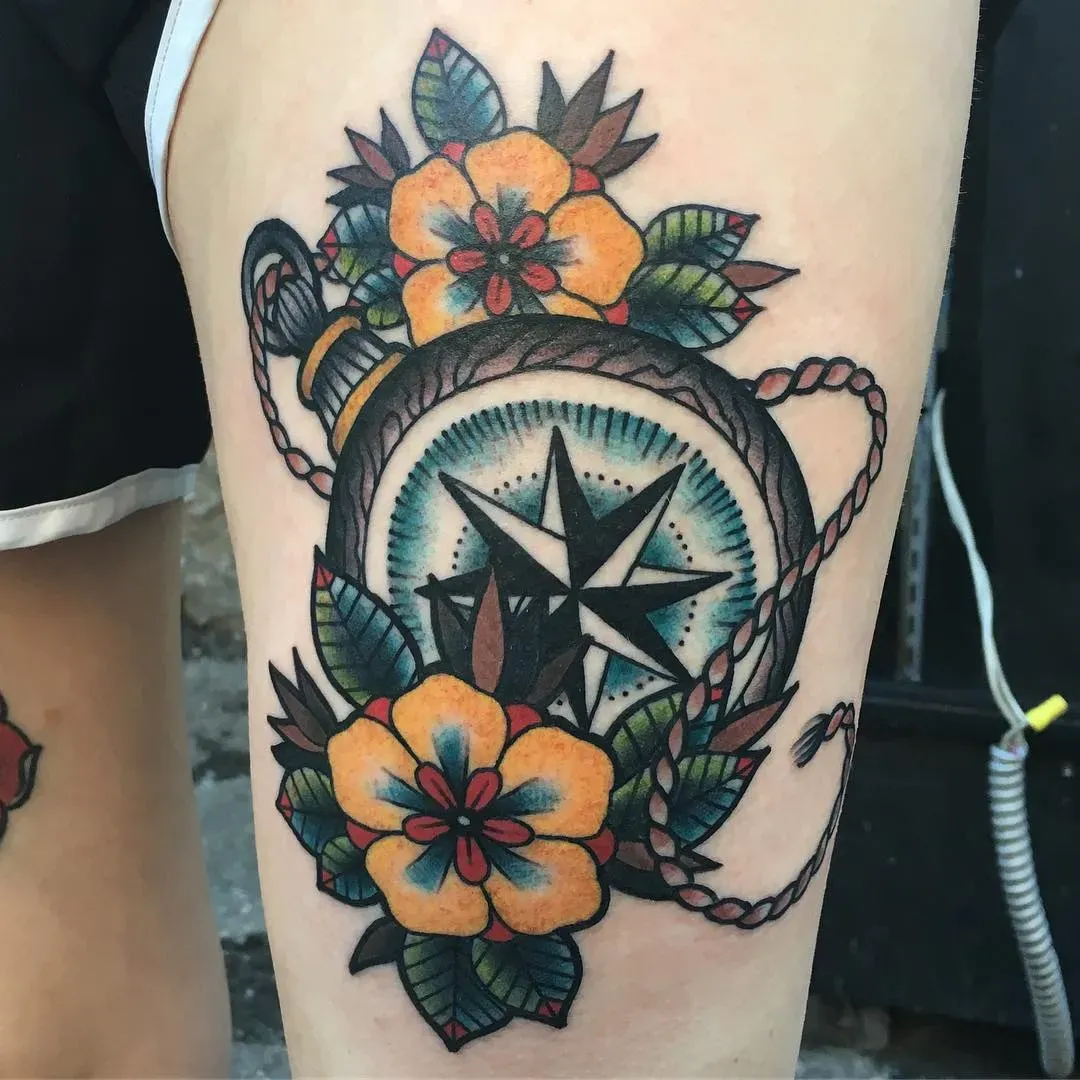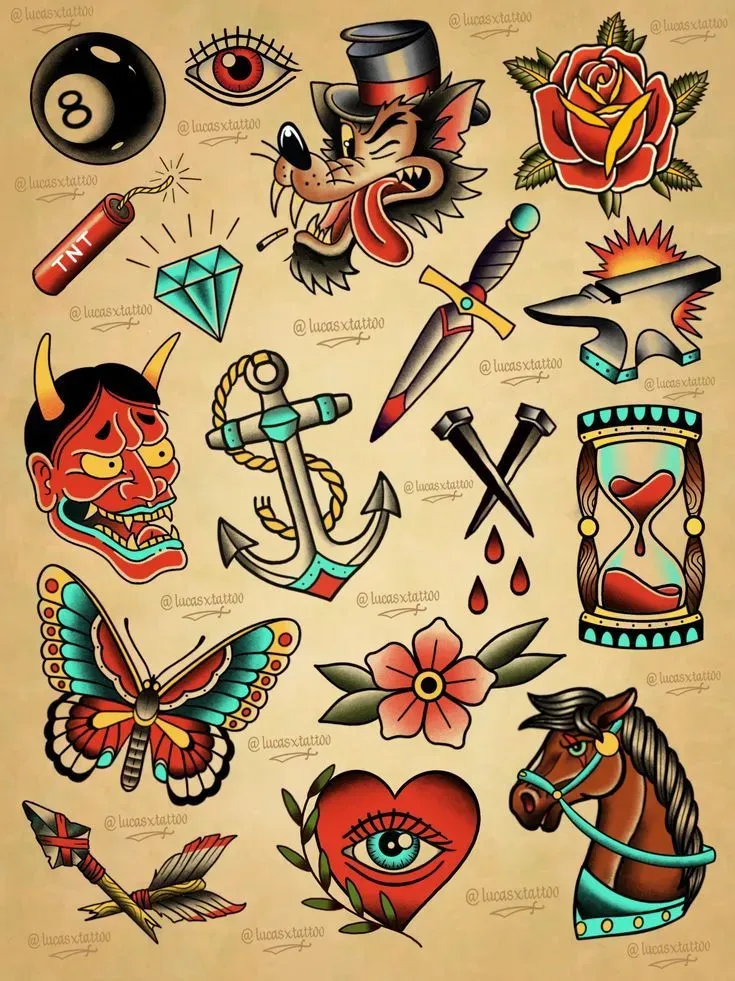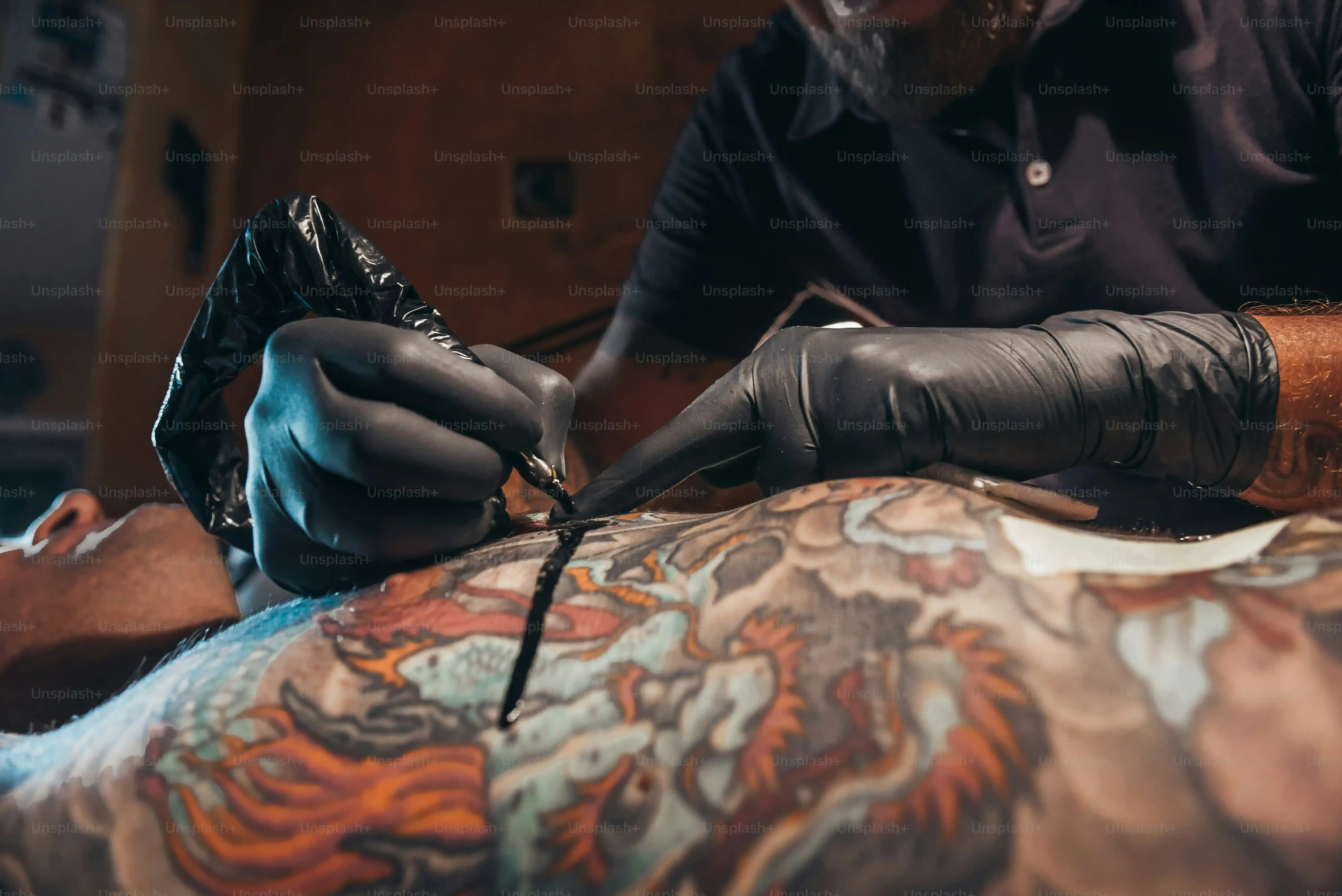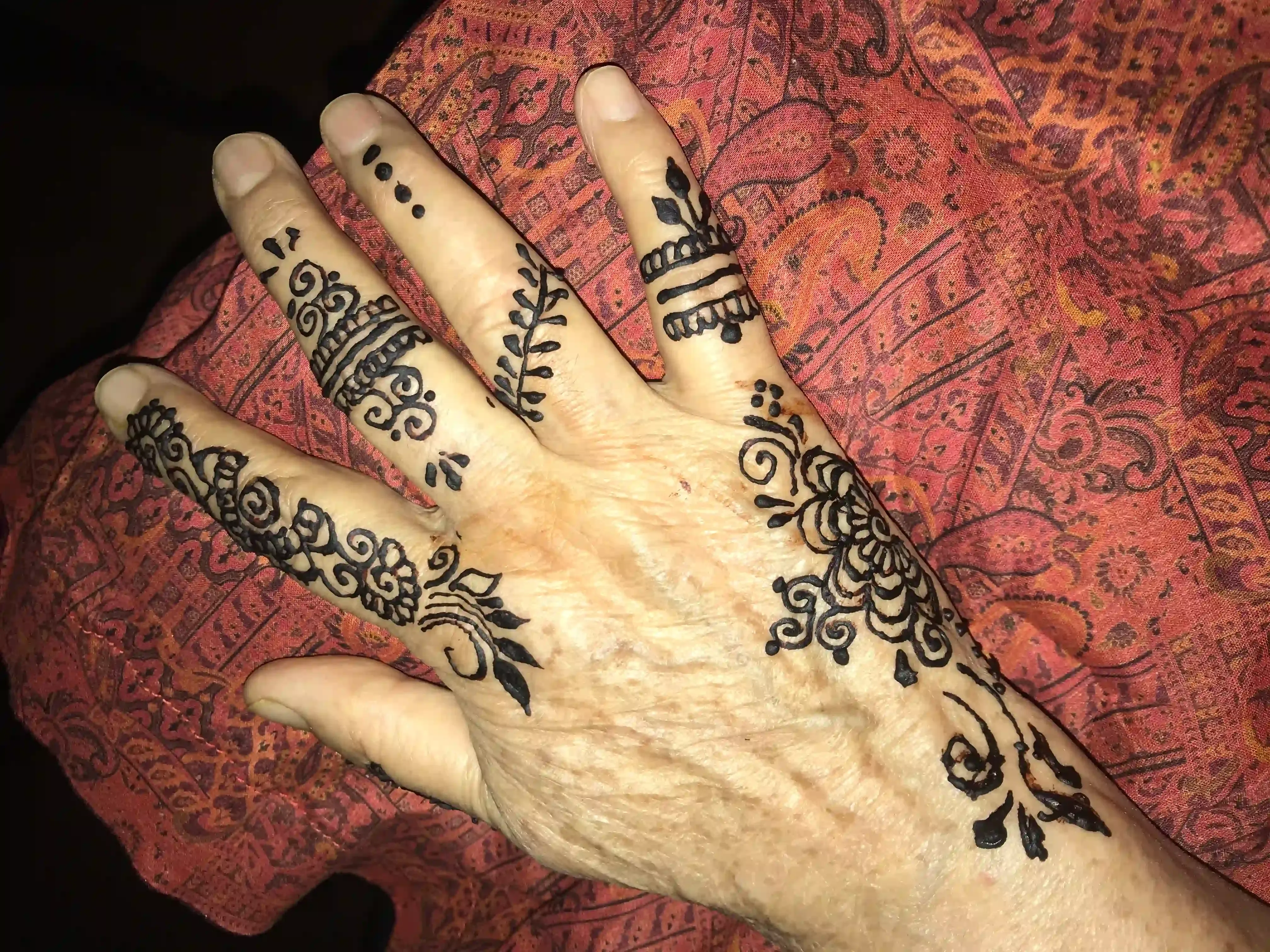Table of Contents
Walk into most tattoo shops worth their salt, and you'll see flash sheets on the wall that look like they were pulled straight from a time machine. Bold lines, solid colors, classic imagery – that's the unmistakable look of tattoo designs traditional, often called American Traditional or old school. These aren't just pictures; they're a direct link to tattooing's colorful past, a visual language spoken on skin for over a century.
The Roots of American Tattoo Designs Traditional
The Roots of American Tattoo Designs Traditional
Setting Sail: How Maritime Life Shaped Early Ink
Ever wonder why anchors, swallows, and ships pop up so much in classic American ink? Blame the sailors. The story of tattoo designs traditional starts largely on the high seas. Before tattoo shops were on every corner, sailors were some of the main folks getting inked. They picked it up from cultures they encountered in their travels, like in the Pacific Islands, where tattooing was a deep-rooted practice. They brought it back home, crude tools and all, marking their bodies with symbols of their voyages, their hopes, and sometimes just plain boredom.
These early tattoos weren't fancy. They were often done with handmade needles and simple pigments. The designs had to be bold and clear because they were applied under less-than-ideal conditions and needed to stand the test of time, and frankly, the weather. An anchor meant you'd crossed the Atlantic, a swallow meant you'd sailed 5,000 nautical miles. It was a visual resume, a form of identity in a tough world. This maritime connection is fundamental to understanding The Roots of American Tattoo Designs Traditional.
From Docks to Shops: Professional Tattooers Emerge
As tattooing popularity grew, especially around port cities, dedicated tattooers started setting up shop. We're talking late 19th and early 20th century, places like the Bowery in New York City. These artists, guys like Martin Hildebrandt (often credited as one of the first professional tattooers in the US) and later legends like Bert Grimm and Sailor Jerry Collins, started refining the style. They needed designs they could execute relatively quickly and cleanly on a variety of clients – not just sailors anymore, but soldiers, factory workers, and anyone looking for a piece of this burgeoning American art form.
They developed what we now recognize as the signature look: thick outlines, limited color palettes (think red, black, green, yellow, sometimes blue), and iconic, easily recognizable imagery. They created "flash" – sheets of pre-drawn designs customers could choose from, hanging on the walls like a menu. This shift from itinerant sailor ink to fixed-location shops with professional artists was a crucial step in solidifying tattoo designs traditional as a distinct style.
Think about the transition:
- From DIY sailor ink to professional shops.
- From simple, often crude marks to refined, bold designs.
- From personal maritime symbols to a shared visual language on flash sheets.
Defining the Look: Bold Lines and Enduring Imagery
What truly defines tattoo designs traditional is their visual punch. The heavy black outlines aren't just for show; they help the tattoo stand the test of time, preventing the colors from bleeding into each other and keeping the image readable for decades. The limited color palette wasn't just an artistic choice; it was often dictated by the pigments available at the time that were stable and safe for skin. This necessity birthed a specific aesthetic – vibrant but not overly complex, designed for longevity and visibility.
The imagery itself became iconic: roses, eagles, tigers, snakes, skulls, daggers, hearts, pin-up girls. Each often carried layers of meaning, some straightforward (a heart for love), some more nuanced (a snake for temptation or transformation). These weren't delicate watercolor pieces; they were statements, meant to be seen and understood from a distance. This deliberate simplicity and boldness cemented the look that is still instantly recognizable today as classic American tattoo designs traditional.
Key Elements of Tattoo Designs Traditional
Key Elements of Tattoo Designs Traditional
The Power of the Bold Black Outline
so you've seen them. Those thick, confident black lines that define traditional tattoos. They aren't shy. This isn't some delicate sketch; it's a blueprint built to last. This heavy outlining is probably the most defining feature of tattoo designs traditional. It serves a practical purpose: it holds the design together over time. As skin ages and ink settles, those strong lines prevent the colors from blurring into an indistinct mess. Think of it as the structural steel of the tattoo world. A well-executed bold outline ensures your eagle still looks like an eagle fifty years down the road, not a feathery blob. It gives the design its punch and readability, even from across a crowded room.
Limited Palette, Maximum Impact
You won't find a rainbow in most classic tattoo designs traditional. The color scheme is usually pretty restrained: black, red, green, yellow, maybe some blue. That's largely due to the pigments available and reliable in the early days of professional tattooing. But this limitation became an aesthetic strength. Using a limited palette forces the artist to rely on strong design and contrast rather than subtle color blending. The colors used are typically applied saturated and solid – no gradients or soft shading here. This solid, vibrant fill makes the image pop against the skin and contributes to that instantly recognizable traditional look. It's about making a statement with what you have, and these artists mastered that.
So, what are the usual suspects in a traditional color lineup?
- Black: For those essential bold outlines and solid fills.
- Red: Often used for roses, hearts, cherries, or accents.
- Green: Common for leaves, stems, or scales on snakes.
- Yellow: Adds pop, used for highlights, stars, or flames.
- Blue: Less common than the others, sometimes used for water or backgrounds.
Iconic Imagery and Clear Composition
The subjects in tattoo designs traditional are specific and often symbolic. We're talking eagles, panthers, skulls, daggers, ships, anchors, roses, pin-up girls, swallows. These images became popular for a reason – they were relatable, visually strong, and carried meaning for the people getting them. The composition is usually straightforward and balanced, designed to fit clearly on common body parts like arms, legs, and chests. There's not a lot of wasted space or fussy detail; every element serves a purpose in telling the image's story. The goal isn't realism; it's impact and clarity. A traditional panther, for instance, isn't anatomically perfect, but you know exactly what it is, and it looks damn cool. This focus on clear, powerful images is central to the enduring appeal of tattoo designs traditional.
Popular American Tattoo Designs Traditional Explained
Popular American Tattoo Designs Traditional Explained
Popular American Tattoo Designs Traditional Explained
Alright, let's talk specifics. When you see tattoo designs traditional, certain images pop up again and again. These aren't random picks; they became popular because they resonated with people, carrying meanings that were important in the lives of sailors, soldiers, and working folks getting inked decades ago. Think of the eagle, often a symbol of freedom, strength, and the USA itself – a no-brainer for patriotic types or anyone feeling bold. Then there's the anchor, a classic for sailors, representing stability and grounding, a safe return home. Snakes? They're tricky, often signifying transformation, temptation, or danger, a popular choice for someone embracing a wilder side. Roses are pretty universal, speaking of love or beauty, but in traditional style, they have a boldness that feels less delicate, more enduring.
Getting Your Own Tattoo Designs Traditional: What to Know
Getting Your Own Tattoo Designs Traditional: What to Know
Finding the Right Artist for Your Traditional Vision
So, you've fallen for the timeless appeal of tattoo designs traditional. Great choice. But getting one isn't like grabbing a coffee; you need the right hands on the machine. Finding an artist who *gets* traditional is crucial. You wouldn't ask a sushi chef to make you a pizza, right? Same idea here. Look for artists whose portfolios are packed with solid lines, bold colors, and classic imagery. They should understand the nuances of the style – the specific color palettes, the way shading is applied (often whip shading or solid fill), and the history behind the common designs. Don't just walk into any shop; do your homework.
Check out their Instagram, their website, and if possible, visit the shop. Talk to the artist. Ask them about their experience with tattoo designs traditional. A good traditional artist will be passionate about the style and able to show you examples of their healed work – that's key, because traditional tattoos hold up remarkably well over time when done correctly. Look for crisp lines and vibrant, settled color. This isn't a style where shaky lines or muddy colors fly.
Preparing for Your Traditional Tattoo Session
you've found your artist. Now what? Preparation is pretty standard for any tattoo, but a few things help when getting tattoo designs traditional. First, be clear about the specific design you want. While traditional artists often work from flash, many are happy to draw something custom in the style. Bring reference images if you have them, but trust your artist's expertise in translating it into a proper traditional piece. They know how to make it work visually and structurally so it lasts.
On the day, make sure you're well-rested and have eaten a good meal. Being properly fueled helps your body handle the tattooing process better. Stay hydrated. Wear comfortable clothing that allows easy access to the area getting tattooed. And be prepared for it to sting a bit – those bold lines require solid packing of ink, which can feel more intense than fine-line work. But the pain is temporary; the killer tattoo designs traditional are forever (or at least, for a very, very long time).
Step | Action | Why it Matters |
|---|---|---|
Research Artists | Look at portfolios focusing on traditional work. | Ensures skill and understanding of the style. |
Consultation | Talk to the artist about your design idea. | Confirms they can execute your vision traditionally. |
Prep Day-Of | Eat, hydrate, wear appropriate clothing. | Helps manage pain and ensures a smoother session. |
The Enduring Mark of Traditional Tattoos
So, whether it's the bold lines of a classic rose or the stoic gaze of a tiger, tattoo designs traditional aren't going anywhere. They represent a lineage, a history inked into skin, proving that sometimes, the oldest ways are still the most effective. In a world where trends flicker and fade, opting for a traditional piece is less about being fashionable and more about choosing something built to last. It's a solid choice, a nod to the craft's foundations, and frankly, they just look damn good when done right. They hold their ground, aging gracefully unlike some other styles we could mention.